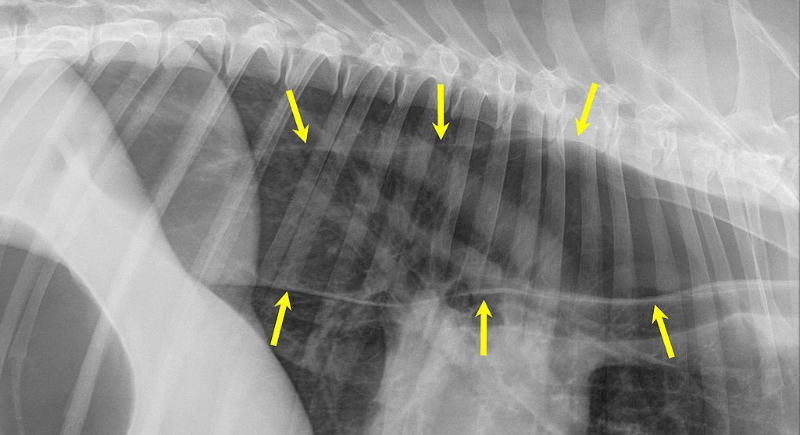These Common Household Things Could Be Giving Dogs a Deadly Condition Called Megaesophagus
Dinner for your dog starts like any other. The sound of paws on the floor, the rattle of a bowl, that small burst of excitement before the first bite. Then it happens. The food comes right back up, untouched by the stomach. It seems like a bad reaction or a stomach bug, but something deeper may be going on.
Some of the most ordinary things in your home can set the stage for a dangerous condition called megaesophagus, a disorder that changes how a dog eats, breathes, and lives. By the time most owners notice, the harm is already in motion.
What Megaesophagus Really Is and How It Can Start at Home

Image via Wikimedia Commons/Anka Friedrich
The esophagus works like a slide, carrying food from the mouth to the stomach. In dogs with megaesophagus, the slide loses its shape and strength. Food and water collect in the passage instead of moving smoothly downward, leading to regurgitation, weight loss, and constant hunger despite eating.
While the condition can result from major illnesses or injuries, everyday hazards in the home can also play a role. The American Society for the Prevention of Cruelty to Animals notes that exposure to toxins such as lead, organophosphates, and certain medications has been linked to cases of megaesophagus. Even esophageal inflammation caused by trauma, irritation, or swallowed objects can trigger it. Sometimes, it’s not a disease at all but something as ordinary as a feeding method, diet, or overlooked toxin that sets this slow process in motion.
Dogs Most at Risk and the Early Signs to Watch
Any dog can develop megaesophagus, but some are more vulnerable than others. Large breeds such as Great Danes, German Shepherds, and Labrador Retrievers show a stronger link to the condition. It’s also more likely in dogs with underlying nerve or muscle disorders, chronic esophagitis, or exposure to certain toxins. In these cases, even a small household trigger can tip an already fragile system into trouble.
The clearest sign is regurgitation, not vomiting. With megaesophagus, food or water comes back up effortlessly, without gagging or heaving. Weight loss, excessive drooling, or a soft swelling under the jaw may follow as food collects in the throat. Coughing or labored breathing can signal aspiration pneumonia, a dangerous complication. These symptoms aren’t minor quirks—they’re early warnings that need prompt attention.
What to Do When Your Dog Has Megaesophagus
When a dog is diagnosed with megaesophagus, management becomes part of daily care. Keep meals small and frequent, and feed your dog in an upright position so gravity helps food reach the stomach. Stay in that position for at least 10 to 15 minutes after eating. Use an elevated bowl or a Bailey chair if possible.
Work with your vet to find the right food consistency. Some dogs handle smooth gruel better, others need small, firm portions that move down more easily. Keep all toxins, chemical cleaners, and unsafe chew items out of reach, and watch closely for signs of aspiration pneumonia like coughing, fever, or breathing trouble. Managing this condition takes routine and patience, but with consistency, many dogs can live comfortably for years.